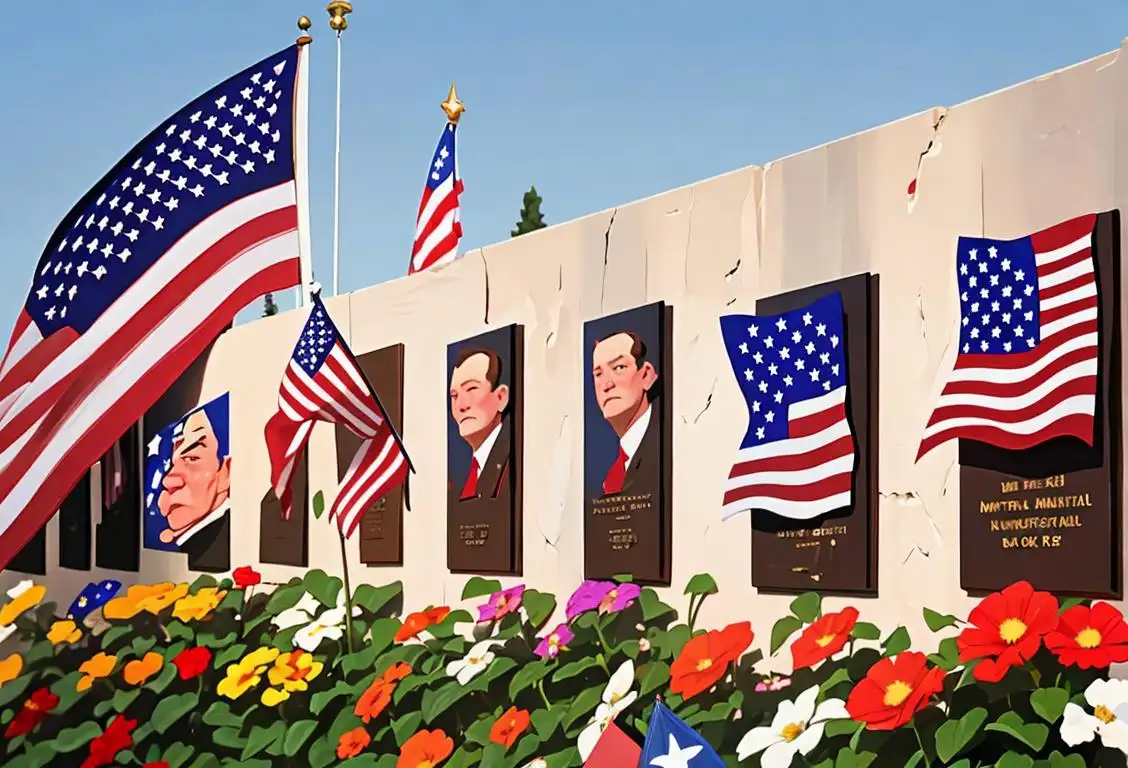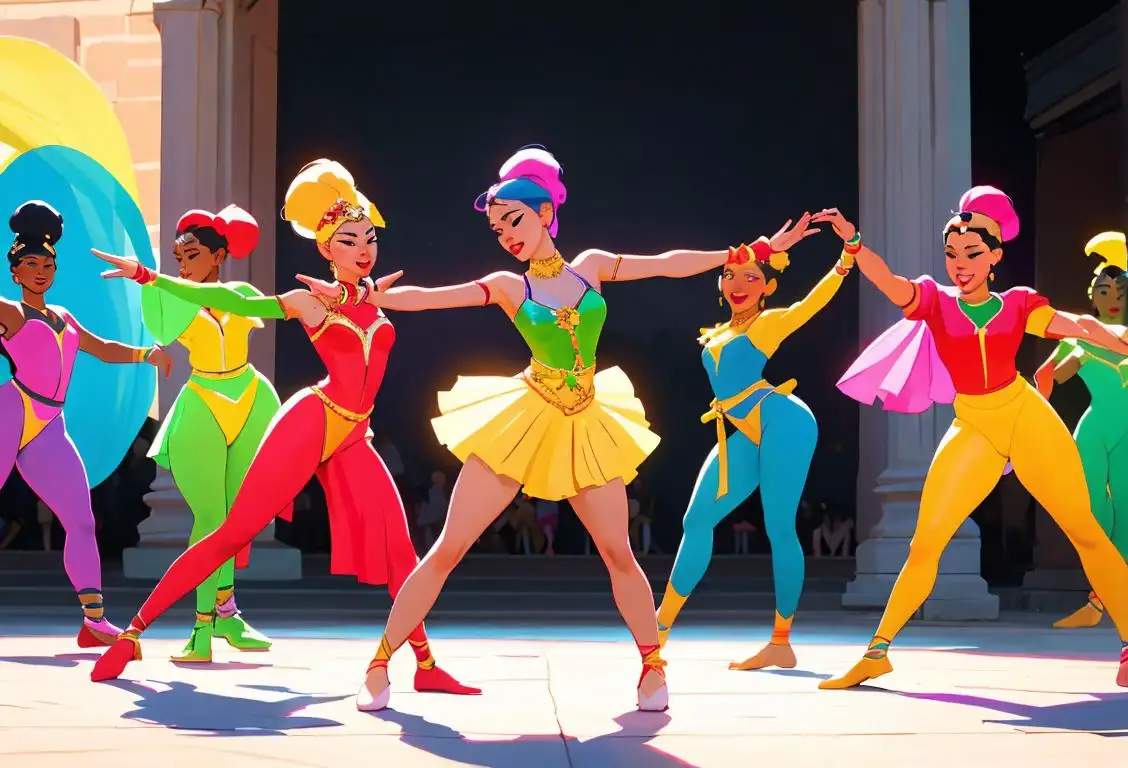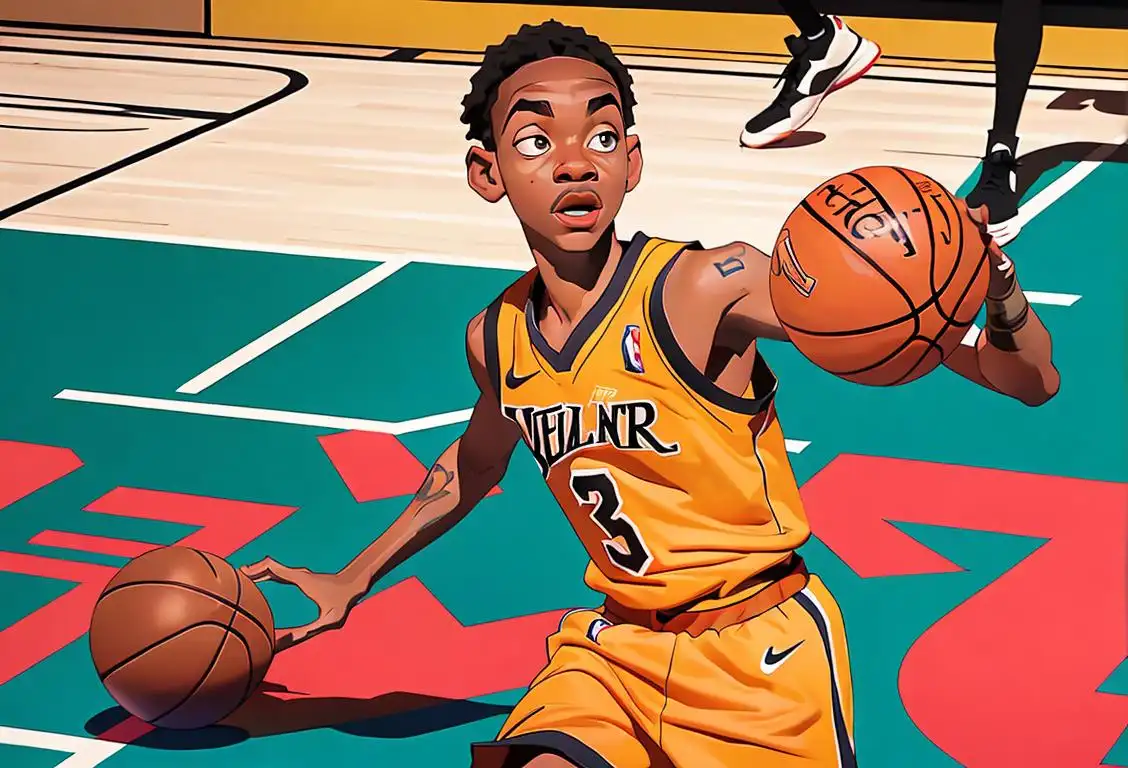National Jump Over Things Day

Get ready for some high-flying fun because today is National Jump Over Things Day! This quirky holiday is all about defying gravity and leaping over whatever obstacle comes your way. Whether it's a puddle, a small toy, or even your own imagination, today is the day to channel your inner kangaroo and hop over things with gusto. So, put on your jumping shoes and let's dive into the fascinating history of this bouncy celebration!
When is Jump Over Things Day?
It's national jump over things day on the 6th April.
The Origins of National Jump Over Things Day
Believe it or not, National Jump Over Things Day has its roots in the virtual world of the internet. This unique celebration first gained popularity in 2016 when it started trending on various social media platforms. People across the globe, fueled by a thirst for adventure and laughter, began challenging each other to leap over any random obstacle they could find.
The concept quickly spread like wildfire, with videos and pictures of daredevil jumps flooding the internet. From celebrities to everyday folks, everyone wanted to showcase their acrobatic skills and join in the fun. Watching a spontaneous video of someone gracefully soaring over a garden gnome became an online sensation, and thus, a national day was born.
An Online Obsession Turns Physical
While National Jump Over Things Day started online, it didn't take long for it to leap into the real world. People loved the thrill of defying gravity, and soon, communities started organizing events and competitions centered around this gravity-defying celebration.
Jump rallies were held in parks, where participants could show off their agility by vaulting over park benches, bicycles, and even fellow jumpers. Spectators cheered and admired the effortless grace displayed by these modern-day superheroes of agility. Who knew jumping over objects could be such a crowd-pleaser?!
Jumping Fun for Everyone
Not everyone may have the skills of a professional athlete, but that's okay. National Jump Over Things Day is all about finding joy in the simple act of jumping. You don't need to leap over skyscrapers or perform death-defying stunts to participate. Even a humble hop over a crack on the pavement counts!
So, gather your friends, family, and loved ones for a day of jumping escapades. Create your own mini jumping course in your backyard or challenge each other to jump over different household items. The possibilities are endless, and the laughter is guaranteed.
History behind the term 'Jump Over Things'
1527
The Invention of Hurdling
In 1527, the term 'jump over things' originated with the invention of a new type of athletic event called hurdling. Hurdling involved athletes running and leaping over obstacles known as hurdles. These hurdles were typically made of wood and placed at regular intervals on a track. This marked the first instance of people intentionally attempting to jump over objects as part of a competitive sport.
500 BCE
Ancient Athletic Events
In ancient Greece, various athletic events were held to honor the gods. The concept of 'jumping over things' can be traced back to these times when the long jump was introduced as a competitive sport. Athletes would leap over distances and objects, showcasing their strength and agility.
1800s
The First Leap
In the late 1800s, the term 'jump over things' emerged as a popular phrase to describe the physical act of leaping over objects. It became particularly associated with sports and physical challenges, as people started competing in various events that involved jumping over hurdles, fences, and other obstacles. This simple yet exhilarating act of defying gravity captivated audiences and paved the way for the cultural impact of the term.
1890s
The Birth of High Jump
In the late 19th century, athletes began to engage in an activity that involved jumping over a bar without dislodging it. This marked the birth of what would later be known as high jump. Initially, the technique involved a scissor-like movement, where the jumper would approach the bar with one leg leading and the other following. While this method was effective, it had limitations in terms of height and efficiency.
1865
Evolution of Obstacle Jumping
By the year 1865, the concept of jumping over objects expanded beyond just hurdles. Obstacle jumping became a popular form of entertainment and recreation, with various events and competitions featuring people leaping over streams, ditches, and even fences. This broader definition of jumping over things started to gain momentum and interest among the general population.
16th Century
Leapfrog Origins
The term 'jumping over things' gained popularity during the 16th century with the emergence of a children's game called leapfrog. It involved participants taking turns to bend over and let others jump over their back. This playful activity further solidified the notion of jumping over objects in everyday life.
1968
The Fosbury Flop Revolution
In 1968, a high jumper named Dick Fosbury introduced a groundbreaking technique during the Mexico City Olympics. Fosbury revolutionized the sport by performing an unconventional maneuver known as the 'Fosbury Flop.' Instead of the traditional scissor technique, Fosbury approached the bar with his back to it and jumped over using a backwards arch. This approach enabled him to clear greater heights with greater ease and efficiency.
1920s
The Rise of Stunt Jumping
During the 1920s, the concept of 'jump over things' gained further momentum with the rise of stunt jumping. Daredevils and performers started incorporating death-defying jumps into their acts, leaping over cars, barrels, and even buildings. This thrilling form of entertainment attracted enormous crowds and further ingrained the term into the public consciousness.
1960s
Legendary Evel Knievel
The 1960s witnessed the iconic rise of Evel Knievel, a legendary stunt performer known for his daring motorcycle jumps over extravagant obstacles. Knievel's daredevilry captivated the world, and his televised jumps became must-see events. The term 'jump over things' became synonymous with Knievel's audacious feats, solidifying its place in popular culture and inspiring countless individuals to pursue their own adventures in jumping over things.
1990s
Expanding Boundaries
Over the next few decades, high jumpers refined and improved upon Fosbury's technique, pushing the boundaries of what was previously thought possible. Athletes began experimenting with different jumping styles, such as the straddle and the western roll, each offering its unique advantages. This era saw high jump records consistently being broken as athletes adapted and evolved their techniques.
19th Century
Horses and Hurdles
As equestrian sports became more prominent, the term 'jumping over things' extended to horse jumping events. Riders had to clear various obstacles, such as fences and hurdles, which required both the horse and rider to effectively 'jump over things.' This led to the development of show jumping, a widely popular sport today.
1942
Parkour Emerges
In 1942, a Frenchman named Georges Hébert created a training method known as 'parcours du combattant' to prepare soldiers for physical challenges they might encounter in the field. This method emphasized efficient movement, including jumping over obstacles, running, climbing, and more. Parcours du combattant eventually evolved into the modern discipline known as parkour, which gained widespread popularity and introduced a new dimension to the concept of jumping over things.
Present Day
Jumping Over Things Beyond High Jump
The concept of 'jumping over things' has extended beyond the traditional context of high jump. In modern times, people engage in various activities involving jumping over obstacles and objects as a form of physical challenge, recreation, or artistic expression. These activities include athletic hurdle jumps, parkour, steeplechase, and even niche events like extreme Pogo stick jumping. 'Jumping over things' has become a universal symbol of agility, athleticism, and pushing personal limits.
1980s
Pop Culture References
In the 1980s, 'jump over things' took on a new dimension through references in pop culture. The term appeared in movies, TV shows, and music, further cementing its place in the collective imagination. From action heroes leaping over cars in thrilling chase scenes to characters performing exaggerated jumps for comedic effect, the concept of 'jumping over things' became a staple in entertainment, ensuring its continued relevance and cultural impact.
2009
Viral Video Craze: Planking
In 2009, an Australian man named Sam Weckert's photo of him lying face down and stiff like a plank on various objects went viral. This spawned a global trend known as 'planking.' Though not strictly jumping over things, planking popularized the idea of interacting with objects in peculiar ways, often involving balancing or jumping over them. While planking mainly involved staying horizontal, it contributed to the cultural notion of engaging with objects in unconventional manners.
Early 20th Century
High Jump Evolution
The development of high jump techniques, such as the scissors jump and western roll, further solidified the concept of 'jumping over things.' Athletes focused on clearing height rather than distance, showcasing their ability to effortlessly leap over a bar. This contributed to the evolution of modern-day high jump competitions.
1968
Dick Fosbury and the Fosbury Flop
The introduction of the Fosbury Flop by American high jumper Dick Fosbury revolutionized the sport. Instead of attempting to jump headfirst or sideways, Fosbury popularized the back-first technique. This innovation allowed athletes to clear the bar at greater heights and became the standard technique used in high jump competitions worldwide.
2010
Leap of Faith Challenge
The term 'jump over things' gained further cultural significance in 2010 when the video game Assassin's Creed: Brotherhood introduced the 'Leap of Faith' as a gameplay mechanic. In the game, players could jump from tall structures and land safely into a pile of hay or leaves. This thrilling and daring leap led to the creation of real-life 'Leap of Faith' challenges, where individuals attempt to jump off high platforms into similar landing areas. The concept of jumping over objects took on a new level of excitement and adventure.
Present Day
The Viral Phenomenon
Today, 'jump over things' has transformed into a viral phenomenon. With the advent of social media and video-sharing platforms, people from all walks of life showcase their incredible jumping skills, often attempting gravity-defying leaps over extraordinary objects. From parkour enthusiasts vaulting over urban obstacles to athletes pushing the limits of human capabilities, 'jumping over things' has become a symbol of athleticism, adventure, and personal triumph. Its appeal continues to captivate and inspire generations to conquer new heights.
Present Day
Cultural Impact and Metaphorical Use
The term 'jumping over things' has permeated various aspects of culture and language. It is often used metaphorically to symbolize overcoming obstacles, challenges, or boundaries in personal or professional endeavors. Furthermore, it serves as inspiration for creative endeavors, such as parkour, where individuals navigate their environment by jumping and leaping over obstacles with finesse.
2021
Social Media Challenges
In the present day, the term 'jump over things' continues to evolve through social media challenges. These challenges encourage people to record themselves leaping over various objects and post the videos online. The popularity of these challenges has led to the creation of numerous viral videos, showcasing impressive jumps and creativity. 'Jump over things' has become a term synonymous with showcasing physical abilities, acrobatic skills, and a sense of adventure in the modern age.
Did you know?
Did you know that the world record for the highest standing jump is held by Javier Sotomayor from Cuba? In 1993, he astonishingly leaped over a bar set at 2.45 meters (8 feet 0.46 inches)! That's like jumping over Shaquille O'Neal standing on Yao Ming's shoulders!Tagged
fun sportsFirst identified
6th April 2016Most mentioned on
6th April 2016Total mentions
7Other days
Golf Day
Hunting And Fishing Day
Cancer Survivors Day
Fitness Day
Memorial Day
Gymnastics Day
Dance Day
Foundation Day
Jr Smith Day
Left Handers Day









